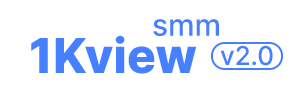Optimizing Facebook Ads costs effectively can be crucial for businesses, especially those heavily reliant on paid traffic for their revenue streams. Let's break down the basic formula and strategies [Facebook Ads - Part 1]
Optimizing Facebook Ads Costs Effectively
Optimizing Facebook Ads costs effectively can be crucial for businesses, especially those heavily reliant on paid traffic for their revenue streams. Let's break down the basic formula and strategies.
Basic Formula
Taking a case example of a Travel Backpack company, they currently have a 9-10% conversion rate. However, it's important to note that this conversion rate isn't low because they're doing something wrong, but rather due to the nature of their business—higher-cost items and larger order values.
Now, the goal is to decrease the cost per acquisition (CPA) to around 7-8% while aiming to double or triple the revenue, considering they've stocked up inventory.
Here's a breakdown of the basic formula:
Revenue = NUMBER OF CUSTOMERS X CONVERSION RATE X AVERAGE ORDER VALUE
NUMBER OF CUSTOMERS:
This can be website traffic, visits, messages, etc. More is better. However, acquiring customers through ads incurs a cost, hence the concept of Cost per Customer.
- Cost per Customer: To reduce this, diversify targeting, update content, images, videos, and focus on creative content tailored to different customer segments.
- Targeting: Initially, focus on demographic targeting rather than diving too deep into specific behaviors or interests until you've gathered enough data. Also, focus on targeted content to each customer segment. This is called Creative Advertising.
COST PER ORDER:
Focus on the top-performing products rather than scattering efforts across all products. This follows the 80-20 rule—concentrate on the items that sell best. To determine this, you need detailed Cost per Order reports for each product and campaign.
CONVERSION RATE:
Building trust and expertise is crucial to improving conversion rates. Customers tend to compare, so being seen as an expert in your field is essential. This involves understanding your product inside out and providing comprehensive advice and information.
AVERAGE ORDER VALUE:
The more value customers perceive, the more they're willing to pay. This includes not just the product cost but also tangible gifts, bundled services, and intangible perceived value.
- Measurement/Decision: Simplify reporting to focus on the most critical metrics for decision-making. Less is more when it comes to reports.
In summary, this approach focuses on understanding your customers deeply, tailoring your advertising content to their needs, and constantly refining your targeting and messaging based on performance data. Ultimately, it's about providing value and building trust to increase conversion rates and maximize revenue while optimizing costs.
